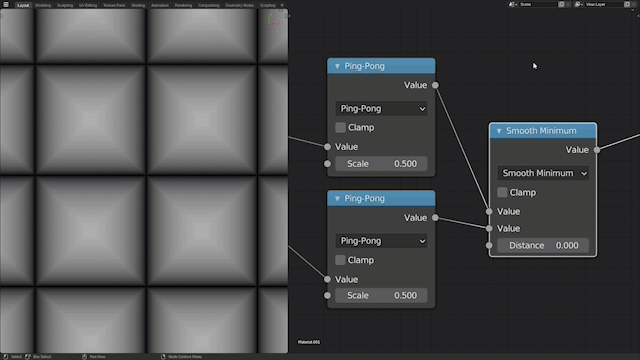
Free Tutorials
Training Courses
Tap into the unlimited potential of Blender’s incredibly powerful node editor, and learn how to create advanced and highly customizable procedural textures from scratch. In this course I’ll walk you through building complex textures, step by step. You’ll learn about a ton of different nodes and creative ways you can combine them to achieve amazing results.
We’ll focus on 3 big projects in this course, highly customizable Subway Tiles, an animated and customizable Lava Field, and a realistic Painted Metal complete with peeling paint and edge damage. All are fun and complex projects that will give us a good mix of both technical and organic styles of textures.
For this course I teamed up with procedural texture master Erindale Woodford. Erin created the textures and I created the training. We chose these specific topics to focus on important texture building skills like technical planning and texture layering to help you gain a strong understanding of how to approach and achieve complexity.
When it comes to nodes, the thought process can be just as important as the technical knowledge, so I’ll be explaining the reasoning behind every move so that you understand not just what to do, but how to plan out every step logically too. One of the hardest parts to approaching something complex is figuring out where to start, and what kind of dependencies could complicate things further into the building process. So each step of the way I’ll include insight into the process behind the planning, and the reasons why things should be done certain ways.
There’s a lot of nodes involved in creating something complex, so remembering everything you do in a tutorial can be challenging. Once you have a solid understanding of how and why nodes work though, combining them together in creative ways becomes a much more natural process. By focusing on the reasoning behind every step, I hope to take this complicated topic and break it down to something that sticks with you. On top of that, Erin’s techniques themselves are extremely innovative, making them something that leaves a lasting impression.

Lots of bonus content has been added to the course. The first additional project covers how to use the lava texture we make in the course to easily transform any logo into lava like in the image below. And another big project has been added in as well on creating a painted metal texture with paint peeling, chipping, rust, and customizable edge damage.
This is an intermediate difficulty course so as long as you have some experience with blender you should be able to follow along fine. But if you need any help going through the project, or even if you just want to chat about the techniques or share your progress, you can email me at chris.cgmasters@gmail.com.